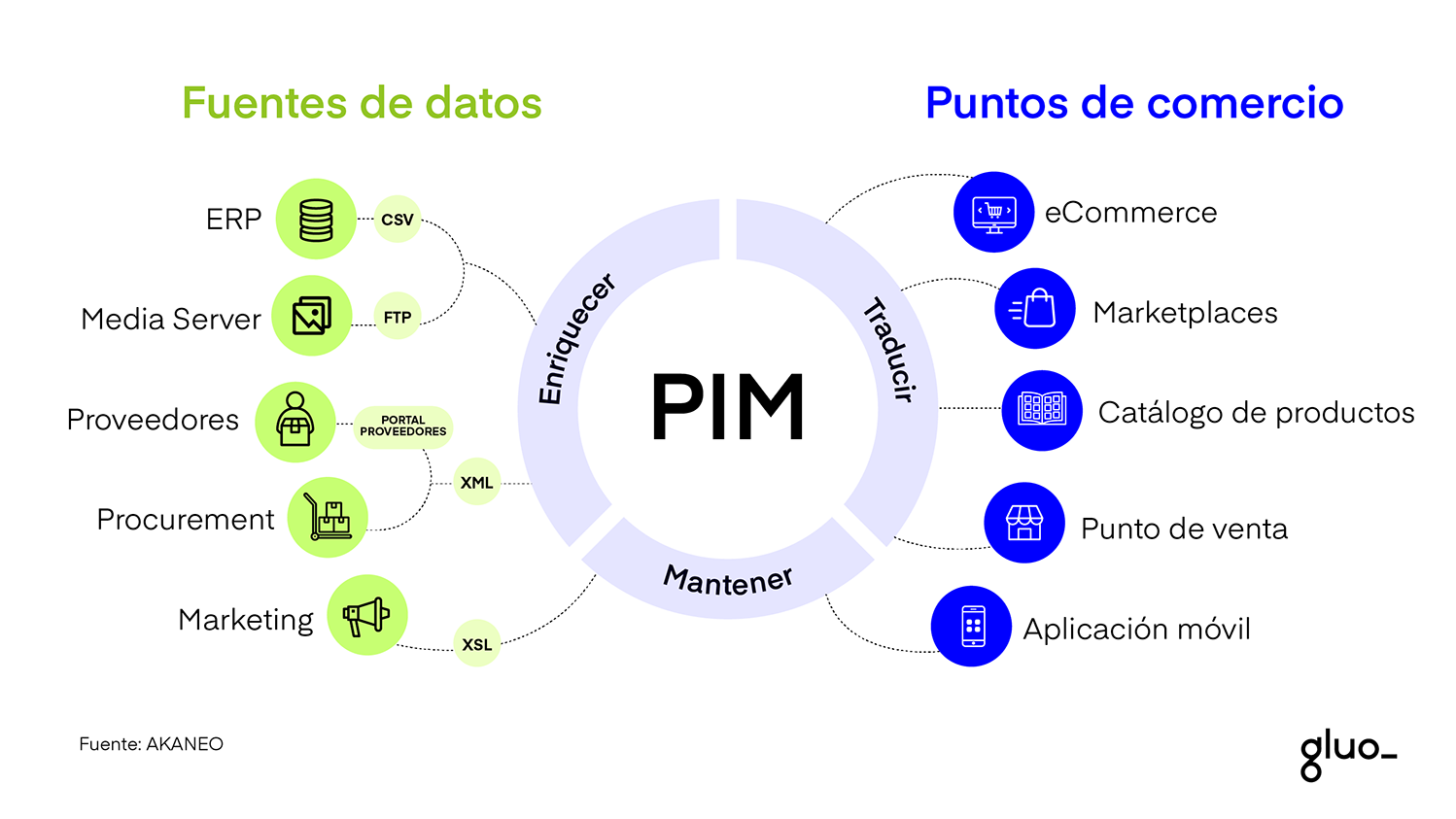Product Information Management (PIM): What is it and how can we benefit from it?

Product Information Management (PIM), is an essential tool that centralizes, structures, and enhances the quality of product data. Companies implement PIM solutions to gather information from different sources and departments, ensuring that the information reaching the customer is coherent, accurate, and up-to-date.
In the digital age, companies face the challenge of handling an overwhelming amount of information about their products. From technical details and descriptions to images and reviews, the need for a single source of truth has become imperative. Shifting customer expectations, the proliferation of sales channels, and the importance of offering personalized experiences are obstacles that companies must overcome.
Consider, for example, a company with an extensive catalog expanding into multiple international markets. Variations in specifications, languages, and local requirements can lead to confusion and mistakes. Another challenge might be the consistency in presenting the product across different platforms and sales points.
This is where PIM stands out. This solution creates a centralized core where product information is managed, enriched, and distributed uniformly. The benefits are clear: consistent product messaging, reduced errors, faster time to market, and a presentation aligned with customer expectations.
In today's intricate world of eCommerce, PIM is not just a tool: it's a foundational piece to ensure your relevance and success in the market.
What is PIM?
PIM is a digital system each day with more relevance in eCommerce. With this system, you can collect, manage, and nurture information of any of your products just from one place, as well as create catalogs and distribute them to the different sales channels and eCommerce channels of your business.
How does the PIM system work?
Imagine you are a shoe producer and the raw material you use for manufacturing goes up, making you increase your selling price from 40 to 45 USD. Through the centralized information of the PIM system, you can make this adjustment consistently across all your digital sales channels, instantly and correctly. These changes can not only be made in price but also in:
Product description
Images
Sizes
Colors
Basically any of your products feature

Key benefits of PIM
Having your product information in one place will help reduce errors and costs, optimizing the efficiency of processes and better time management. By doing this you will be able to launch new products faster into the market.
It will also improve the customer experience by providing accurate, detailed, and correct information about any product they wish to purchase, avoiding negative reviews and helping to create loyalty by obtaining the same purchasing experience across the different sales channels you manage.
Integration with other systems
PIM systems integrate very well with any eCommerce platform to increase the performance of your website and your online revenue. It also integrates with CRM (Customer Relationship Management) systems to improve the customer experience and efficiency of your sales team, with ERP (Enterprise Resource Management) software to improve inventory management and product billing more efficiently and accurately, among other systems. By integrating a PIM system with any of these tools, you can simplify and accelerate your business processes
Who should use a PIM system?
Anyone who has an eCommerce store and handles different products, manages a marketing or sales department or sells through multiple channels can benefit from this system. Sales teams can access precise material or product information whenever they need it, eCommerce managers can improve conversion rates and personalization by analyzing how customers are interacting with their products and marketing teams can launch winning product campaigns and create loyalty among consumers.
In summary, PIM is a powerful tool that will allow anyone to manage product information consistently and structured from one place, optimize information management processes, streamline sales operations, and offer better experiences to customers. By implementing a PIM system, it is easier to stay competitive in today's fast-paced digital world.


